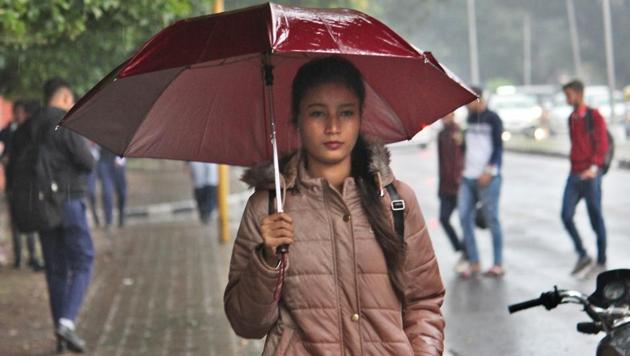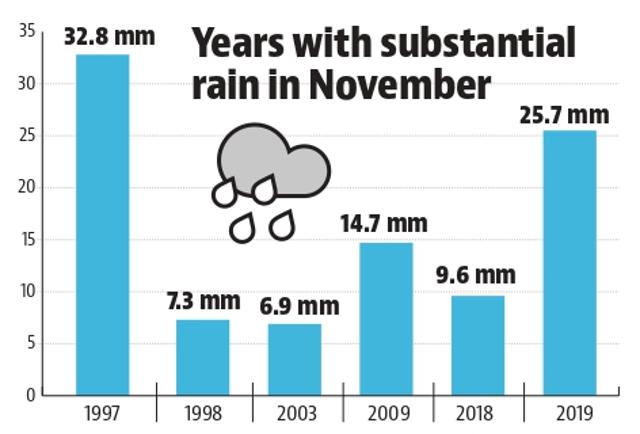Chandigarh sees wettest November since 1997, more rain on the cards
Rain causes mercury to plunge to 22°C, three notches below normal; further drop may lead to fog
With the easterly winds bringing in 11.6mm rain on Tuesday, Chandigarh has recorded 25.7mm rain this November, the highest since 1997, as per data available with the India Meteorological Department (IMD).

The showers caused the maximum temperature to plunge from 26.5 degrees Celsius on Monday to 22.2 degrees on Tuesday, three degrees below normal. However, due to the cloudy skies overnight, the minimum temperature shot up from 10.4 degrees to 13.8 degrees.
Talking about the unusually high rainfall this month, Surender Paul, director, IMD, Chandigarh, said, “Unlike past few years, there were two Western Disturbances in November this time around. These, coupled with easterly winds, which are high on moisture and are responsible for the declining air quality, caused the moderate rain.”
Paul added that light to moderate rain (up to 30mm) was likely on Wednesday, after which the weather will clear up. “A weak Western Disturbance will affect the city around November 30, which will cause cloudy skies. A little rain is also possible,” he said.

MERCURY TO DROP FURTHER
Tuesday’s maximum temperature at 22.2°C was the lowest recorded this month, thanks to the cloudy cover due to the rain.
The Western Disturbances also brought along snowfall in Himachal Pradesh, which, Paul said, will lead to further drop in the temperature in the coming days.
“As the skies clear up after Wednesday, the temperature, especially during the night, will see a drop. Cold westerly winds will also remain active in the region, bringing the temperature down by a couple of degrees, ” Paul said.
In the next three days, the maximum temperature will remain between 21 and 22 degrees, while the minimum temperature will hover around 15 degrees.
VISIBILITY MAY BE AFFECTED
With the decrease in temperature and high level of humidity, light fog can also be expected in the city.
“Fog is likely during the night and in the early morning hours in isolated pockets around the city. This will lead to reduced visibility,” Paul said, adding that the Air Quality Index (AQI) of the city can also decline around this time, especially if stubble burning continued in the city’s periphery.





